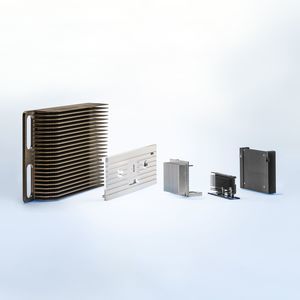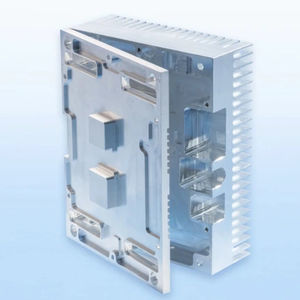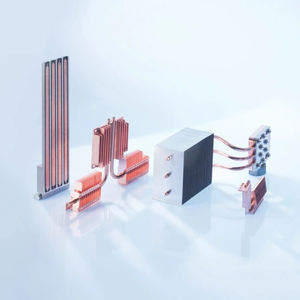
- Electricity - Electronics
- Electronic Component
- Aluminum heat sink
- CTX Thermal Solutions
Aluminum heat sink extrudedfor PCBclip-on





Add to favorites
Compare this product
Characteristics
- Material
- aluminum
- Options
- extruded, clip-on, for PCB, custom
Description
PCB heat sinks cool specific high-power electronic components, singly or in groups. Our wide-ranging portfolio of standard heat sinks for PCB cooling comprises several hundred different models with Rth values between 6 and 72 °C/W. These include, for example:
Clip-on heat sinks for semiconductor housing types TO-220 and TO-218
Extruded SMD heat sinks
Stamped low-profile heat sinks for standard D-PAK (TO-252), D²PAK (TO-263) and D³PAK (TO-268) modules
Profile heat sinks with integrated soldering pins for wave soldering on the PCB
Soldered, clip-on or screw-on heat sinks
Always the optimal cooling solution for your PCB
Our board level heat sinks are made of aluminum or copper, optionally using sheet bending, extrusion or die-cast technology. Which heat sink is the optimal solution for your application depends on the particular cooling capacity requirements and the installation space, the number of heat sinks required and the method for mounting the heat sink.
Various mounting types
Whether the heat sink is fastened to the PCB by means of clips, rivets, soldering pins or screws depends on the type of heat sink, the application and the required quantity.
In the case of large quantities, mounting clips reduce high-labor activities. They are the preferred mounting type for extruded PCB and clip-on heat sinks. Finger heat sinks are typically equipped with integrated soldering lugs during production. Other heat sink variants can also be mounted directly on the PCB by means of soldering pins.
Catalogs
CTX Brochure
12 Pages
Related Searches
*Prices are pre-tax. They exclude delivery charges and customs duties and do not include additional charges for installation or activation options. Prices are indicative only and may vary by country, with changes to the cost of raw materials and exchange rates.








